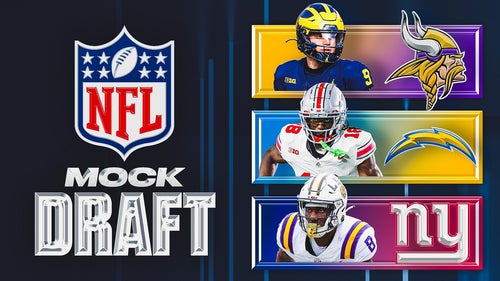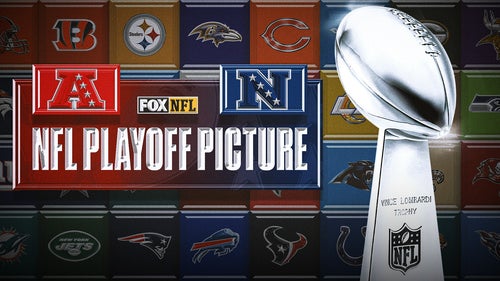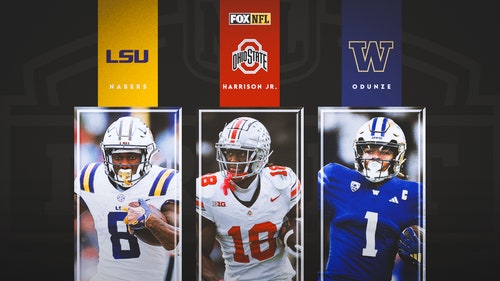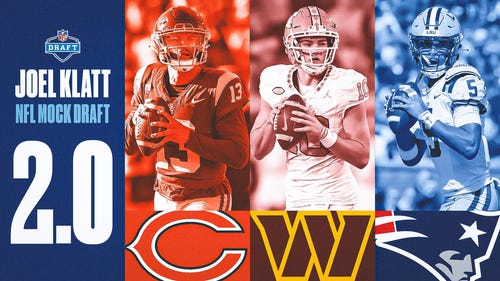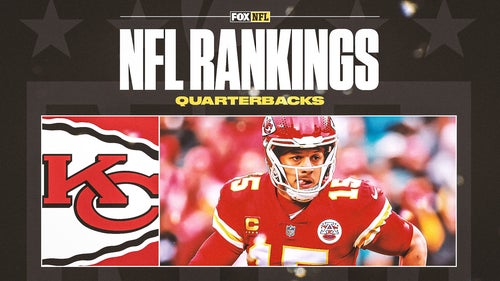
Eli Manning Is Tougher Than You
Last month, when the Giants played the Cowboys on Sunday Night Football, an NBC camera caught Eli Manning on the field pre-game, doing a stretch called the Carioca, or, informally, the karaoke. It’s a traditional stretch that’s taught in gym class everywhere. Eli was jogging sideways, alternating between stepping his right foot in front of and behind his left foot, while holding his hands up, palms out, and twisting his torso back and forth.
It made Eli look awkward and unathletic and a bit goofy. An NBC analyst laughed as it played onscreen. “Now, is he dancing to the music there?” Dan Patrick asked in jest. Someone turned the video into a meme, with a caption pointing out that this guy had beaten the Cowboys twice this season. It went viral. Everyone had a good laugh at Eli’s expense.
What you didn’t know, though, was that stretching has been important to Eli for all his life. His father, Archie, had been obsessed with stretching during his own playing career and had taught each of the Manning boys how to stretch at an early age. “Literally like 1970s Jack LaLanne stretching,” says Cooper, the oldest Manning brother. “Physical Education 101 stretching.”
Eli had learned to stretch when he was a kid of eight or nine. He’d tag along when his father retreated to the shed behind the family home in New Orleans, to a small, grungy, windowless room where Archie kept his weights. Archie would lift while Eli obediently stood in the corner, jumping rope and stretching. He loved it, being in there with his father. He turned the stretching into a sort of game, testing how far he could go. He started bending from a standing position and touching the ground with his fingertips … and then he touched his knuckles … and then, one day, Eli bent over and pressed his palms flat against the floor.
Twenty-seven years later he still uses similar stretches as part of his daily routine. Eli stretches for 25 minutes each morning when he arrives to the Giants’ facility. He stretches before his workouts. He stretches before practice. He stretches before games. He stretches his hips and ankles, his shoulder and his arm. He still jumps rope, too. Eli takes this routine very seriously, and he credits it for his longevity.
Eli has started, including the playoffs, 210 consecutive games—and there will be at least one more in this postseason. It’s longest active streak in the NFL. Only two quarterbacks in league history have had longer streaks: Brett Favre and Eli’s brother Peyton. And if Eli keeps playing, he could pass his brother by next season.
How did Eli Manning, of all people, become the Iron Man of the modern NFL?
There’s a lot you can learn about a person over the course of 210 games.

* * *
Start 42
“My shoulder is killin’ me. Get warmed up.”
This was Week 1 of Eli’s fourth season in the league. Jared Lorenzen had been his backup for the previous three years, and he had never heard Eli say anything like that. Lorenzen laughed at first, thinking Eli was messing with him. Eli often grimaced, scowled and made weird faces during games; it was hard to take him seriously. Later, the fans would dub this phenomenon the Manning Face.
“Seriously, go throw,” Eli shot back. The Cowboys’ Anthony Spencer had just thrown him to the ground, jamming his shoulder hard into the turf.

Lorenzen grabbed his helmet and started playing catch. Then on Dallas’s next play from scrimmage, Tony Romo threw a pick. Lorenzen wasn’t ready. He started freaking out.
“What’s the deal?” he asked Eli.
“I’m going to go. But be ready in case I can’t throw.”
The Giants trailed the Cowboys by 10 points, with about seven minutes left in the game. On a short field, Eli completed four short passes, the last to Plaxico Burress for a touchdown. Coming off, Eli passed by Lorenzen. “I’m done,” he said.
Afterward, Eli learned that he had separated the shoulder on his throwing arm, and the media reported he’d be out for several weeks. Lorenzen heard it might be four weeks, maybe eight, maybe the rest of the year. Coach Tom Coughlin didn’t tell him anything specific, just that he should be ready, so Lorenzen practiced that week with the first-team offense, assuming he’d start. Eli didn’t take any reps on Wednesday, or Thursday. He only managed some light throwing on Friday. “And I’ve got a seven-year-old son who can throw better than Eli was then,” Lorezen says. “I was like, there’s just no way this guy can play.”
Sunday finally came, and Lorenzen warmed up as if he would be starting. Out of curiosity, just being polite, he asked Eli how he was feeling. “I think I’m going to give it a go,” Eli said nonchalantly.
Lorenzen’s heart sank.
The Giants lost that week, 35-13, but Eli led them to wins in their next six games.
* * *
Start 95ish
Lying there on the ground after taking the hit, Eli touched his forehand and felt blood. A cut had opened on the left side of his temple, and a stream of red was now running down his face. He couldn’t play through that. He got up and staggered and decided to kneel down and motion for help.

Eli had checked from a run to a pass play, and apparently Brandon Jacobs, his 270-pound running back, hadn’t gotten the message. Jacobs came running hard downhill right as Eli was dropping back. They collided, which caused Eli’s helmet to loosen and the ball to pop out of his hands. Then as Eli turned for the ball, Jets linebacker Calvin Pace rocked him from behind. The force of the hit caused Eli’s helmet fly off completely, and, a moment later, Jets safety Jim Leonhard collided with Eli’s unprotected face, giving him a three-inch gash on his forehead.
Fortunately it was only a preseason game. Eli received 12 stitches, practiced for a while wearing a baseball hat instead of a helmet and sat out the next preseason game, too.

For most people that wouldn’t be a big deal. But sitting out even a preseason game seemed to bother Eli. That day he wandered around aimlessly, making small talk, chatting with the other quarterbacks. “He was a lost puppy,” his lineman Chris Snee says. “He didn’t know what to do with himself. I tried explaining to him, ‘It’s preseason, come have a hotdog with me. Let’s just sit in the back locker room and talk. Let the other guys get dressed and ready to play.’ But he did not feel comfortable at all. He does not like to miss anything.”
* * *
Start 4
Eli doesn’t normally make mental mistakes like forgetting to tell a running back about an audible. Not since his rookie year. Not since that infamous Ravens game.
Baltimore’s veteran defense had toyed with young Eli all game. Before each snap, Eli and his center, Shaun O’Hara, would set the protection and designate a defender as the “Mike”—and then, as the play clock wound down, the Ravens would flip their linebackers or change their coverage, and Ed Reed and Ray Lewis would pop around the field, teasing Eli, shouting, “I’m the Mike! I’m the Mike! I’m the Mike!”
Eli was benched in the fourth quarter and finished with a 0.0 quarterback rating. The Giants lost, 37-14. On the train ride back home, Eli and O’Hara had a beer.

Eli never wanted to be confused or surprised like that again, so he and O’Hara made a habit of watching extra film together three or four times a week. They studied their opponents’ tendencies, their coverages and their blitzes. They discussed in depth what they’d do in each scenario. They stayed so late some days that Eli would order dinner in. These were the nights Eli learned he could protect himself, if he studied enough film and could correctly direct his protection before the snap.
Eventually, Eli started hosting his own film sessions for the tight ends and running backs, too, and anyone else who may be called on to block. He’d put together his own reel on the opponent and walk through what he wanted everyone to do.
From then on, when Eli came to the line of scrimmage, he would be in control. He’d identify the players who’d be blitzing and set the protection accordingly. He’d know where the line was vulnerable, who might need help. He’d know where exactly the free rusher would be and approximately how much time he’d have to throw.
No detail went unnoticed. If by some chance Eli took a hit, while he was still lying on the ground, he would check the number of the player who had gotten free. He wanted to correct the error immediately, and not wait for the train ride home.
* * *
Start 83
For a moment it looked as if Eli had torn his Achilles. There was no hit, no collision, no contact. Dropping back to pass, he had planted his right foot and started hopping around, as if something had bitten his heel. There was nothing he really could have done differently, and if it were indeed an Achilles tear he would probably be out for at least a year, maybe more.
Instead, Eli was diagnosed with plantar fasciitis, which he could play through if he could tolerate the pain. He spent most of the week holed up in the trainer’s room, as several staffers worked on his foot. “We’d come in there and ask a trainer for help wrapping ice on our shoulder, and Eli would walk in the room and four trainers would rush over to him,” O’Hara says. “Eli’s over there with three trainers standing around him, and we’ve got five guys over here trying to wrap ice bags on their own knees.”

O’Hara teased Eli endlessly for that, and also for the dozen cleats that were piled up in the trainer’s room, from shoe companies that sent them unsolicited. “Look at these Hush Puppies,” O’Hara said to Eli. “They look like the shoes you already wear.”
The Giants chose to have a custom cleat made that would give Eli extra support, and some of his teammates laughed when they saw the shoes the next week. The new cleat looked clownish and a bit clunky. It didn’t help fix the public perception of Eli as ungraceful. “He came out looking like a Clydesdale,” O’Hara says, chuckling.
Eli played the rest of the year in obvious pain, and he still set a new career high in passing yards (4,021) and touchdowns (27). All while wearing that clunky shoe.
* * *
Start 84
With Eli’s mobility limited due to the plantar fasciitis, he had to rely on his offensive line more than ever that year. He was a bit spoiled in that O’Hara, Snee and David Diehl—three Pro Bowlers—had been consistently in the lineup, too. In fact, for a span of 38 regular-season games, from 2007 until 2009, the Giants started the same five offensive linemen: O’Hara, Snee, Diehl, Rich Seubert and Kareem McKenzie.

After spending all that time together, the linemen had become some of Eli’s closest friends on the team. Eli would sit next to Snee on the team plane. He’d take the entire line out to dinner and foot the bill. He’d prank O’Hara, and then O’Hara would prank him back.
One time, out of retaliation, O’Hara bought a frog from a pet store and hid it in Eli’s sock. When Eli went to put the sock on, the frog jumped out and Eli jumped up, sprinting out of the room. Then Seubert scooped up the frog and chased Eli around with it, too. “I’ve never seen him run that fast in my life,” O’Hara says. “I didn’t know he was afraid of frogs.”
* * *
Start 129
Eli was running for his life again, and Justin Tuck and several other veterans kept approaching David Carr, his backup, on the sideline. “You’ve got to be ready, man,” they were saying. “I don’t know if Eli can take any more hits.”
It was the 2011 NFC Championship Game, and the Giants’ offensive line was buckling from all the pressure from Patrick Willis, NaVorro Bowman and the rest of the 49ers defense. Not only that, Eli was playing with the flu. He hadn’t fully practiced all week. When the open portion of practice ended and the media left, Eli would rush to the bathroom to vomit. Sometimes he’d stay there for the rest of practice. Carr guessed that, through all of this, Eli must’ve lost 10 pounds.

Now the 49ers were throwing sickly Eli around like a rag doll.
But he never blamed his linemen. He never singled anyone out. He never really said a word. He just picked himself up and went back to the huddle. “When you’re having a tough day and your quarterback is getting hit, you turn around and Eli has the same face on,” says Snee. “He’s doesn’t look frazzled. He doesn’t look skittish. He doesn’t look anything. He’s got the same goofy-looking face. It’s comforting to see that.”
The 49ers sacked Eli six times, and he still led the Giants to a 20-17 overtime win.
* * *
Start 130
A few months later, after Eli had won his second Super Bowl, his brother Cooper visited New York on business and texted one day out of the blue. They both happened to be walking around Midtown at the time, so they decided to meet up. They stood there on a busy sidewalk for several minutes catching up, the Giants quarterback in a T-shirt and blue jeans, his star power having never been higher, people bustling around, and … no one bothered them.
Cooper was in awe. New Yorkers tend not to fawn over celebrities in general, but this was different. When Peyton entered a New York restaurant, the whole place would turn and look. This was a testament to Eli’s unassuming manner, which has allowed him to thrive in the New York media market all these years. Eli never had a scandal in the tabloids. He never said the wrong thing in the media. He carried himself as if he were any other anonymous New Yorker, talking with his brother on a street corner. The way Cooper puts it: “The biggest Giant fan in the world may be sitting at the table next to him and not notice him. It’s a gift.”
* * *
Start 200
The 300th touchdown pass Eli threw looked like a classic Eli throw, the kind that would make Giants’ fans cringe. Eli dropped back, and, sensing Terrell Suggs charging from behind, he quickly slid to his right. Just before Suggs arrived, he flung a pass off his back foot toward a receiver who was tightly covered. Then he turned and crouched and braced for the hit.
Snee, Diehl and O’Hara had all retired, and the Giants were in the process of remaking their offensive line. Taking hits like this had become a common part of the job for Eli.
[pullquote]“Eli was like Gumby. He’d get hit and bend and flex and hit the turf hard and get up and be fine.”[/pullquote]
After all those years, though, he had learned the art of taking a hit. Rolling out, buying himself an extra second, and throwing off his back foot. Shifting his weight onto his heels, like someone taking a charge in basketball, so he doesn’t take the brunt of the blow. The subtle turning, crouching, and ducking at the last moment.
“Eli was almost like Gumby,” says Sage Rosenfels, his backup in 2011. “He’d get hit and bend and flex and hit the turf hard and get up and be fine. There was probably a hit a game where I thought, ‘OK, I might be going in here.’ And he jumps up completely fine.”
* * *
Start 111
Eli was well aware that one day he might take a hit and not jump up completely fine. He’d talked to Peyton every so often in 2011, when Peyton’s own consecutive starts streak of 227 games had come to an end that September. Peyton had undergone neck surgery during the offseason, and he was having a lot of trouble regaining his arm strength. It was the first time in Peyton’s entire career that he’d been seriously injured.
Eli had never been seriously injured himself, either. He didn’t know what to say.

“It wasn’t really anything you could control,” Eli says now. “It wasn’t like a certain hit. It was just something that came up on him, and, with it being a neck, you can’t really mess with that too much.” Eli shrugs his shoulders. “I knew he wanted to be out there. I knew he didn’t like just sitting around, not doing anything. That’s not his style. But, you know, I think he also knew—it wasn’t like he had a choice. ‘Oh, maybe I can tough it out…’ It wasn’t a tough-it-out scenario. He couldn’t throw, really. He had to have several surgeries to try to fix it. He was rehabbing and trying to get that streak back; it was just taking a long time.”
* * *
Start Zero
The hardest hit Eli ever took might’ve come in his very first NFL game. The Eagles were blowing out the Giants when Eli came on in the fourth quarter, in place of Kurt Warner. On the last play of the game, he dropped back, looking for the end zone. This was his chance to make a first impression. The pocket collapsed, and he rolled right, still looking downfield while trying to elude the linebacker coming for him head on. Then: BAM! Jerome McDougle, the Eagles’ 264-pound defensive end, viciously slammed Eli from behind. Eli’s head snapped to and fro like a bobblehead toy, and his arms went limp at his side as he collapsed to the ground.
Eventually he rose to his feet and did that patented Manning shrug.
Perhaps it was a sign of things to come. Over the next 12 years, Eli would take countless hits and just shrug them off. The shrug indicated that he’d be O.K.
Cooper watched the hit and was reminded of Eli as a toddler. Cooper and Peyton sometimes had to babysit young Eli, and they’d just let him roam free. “He would be walking down the stairs,” Cooper says, “and he would just trip, fall—bam, bam, bam, BAM—and hit the floor. And he’d pop up fine, like, ‘Yeah?’ We thought we had killed him. And he would climb right back up the stairs and try again. We were just dying laughing.”

Question or comment? Email us at talkback@themmqb.com.







































































































































